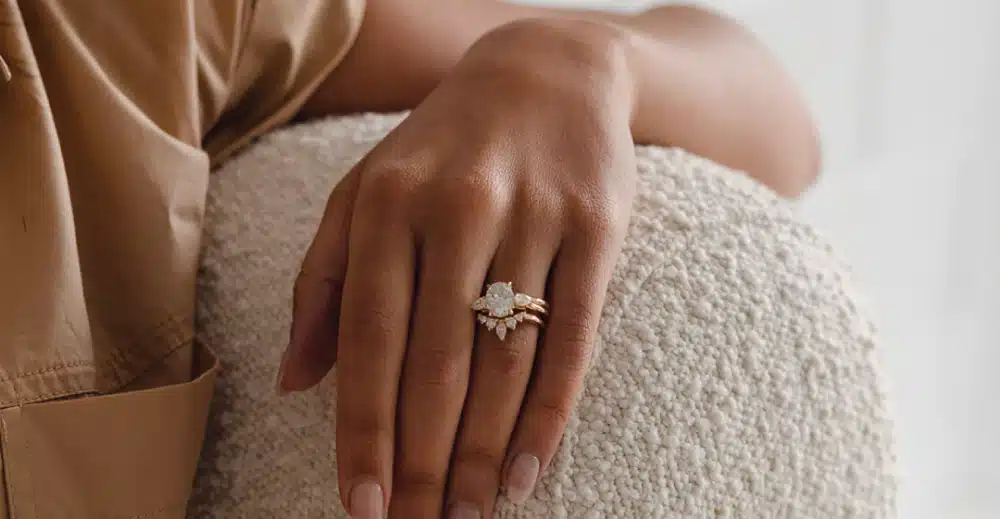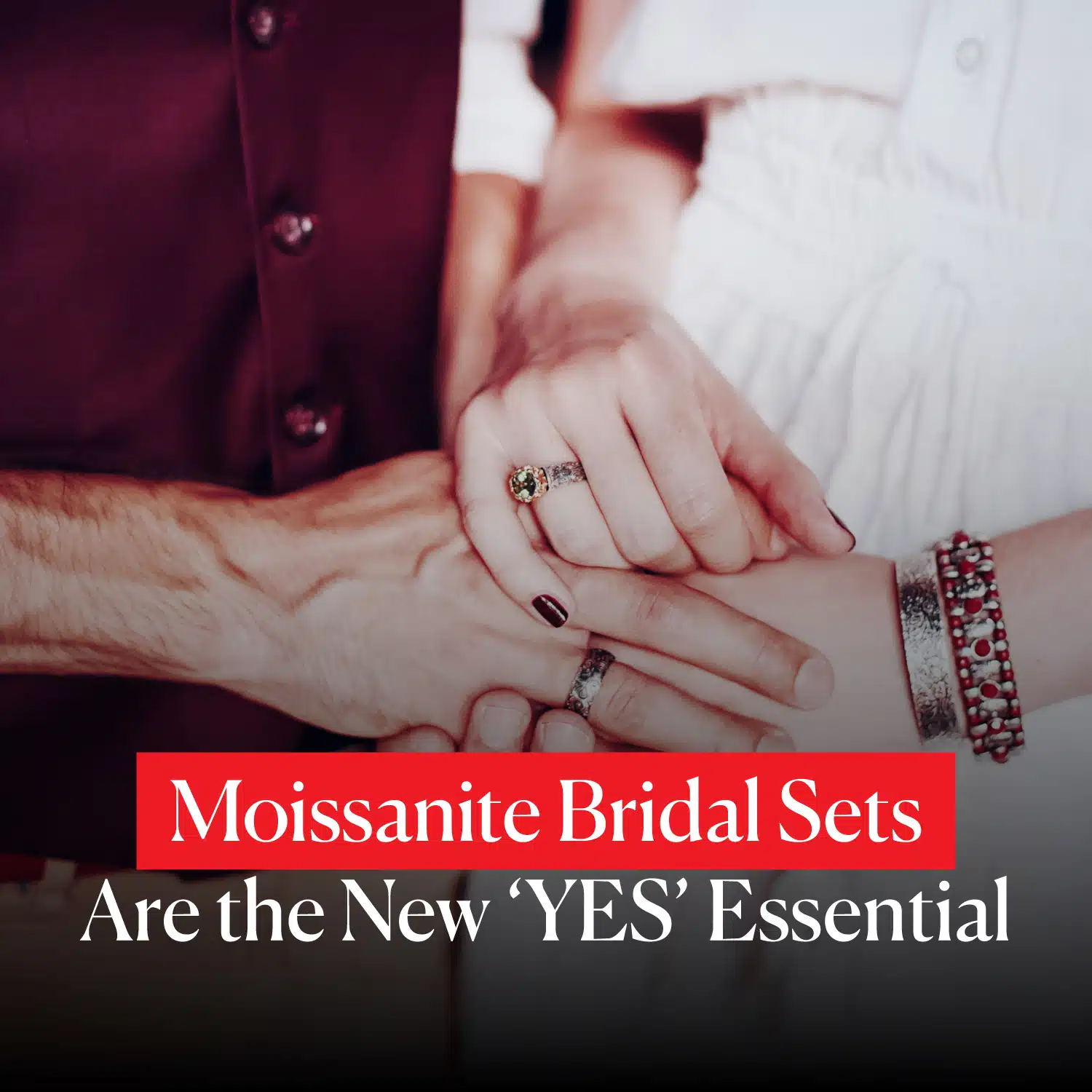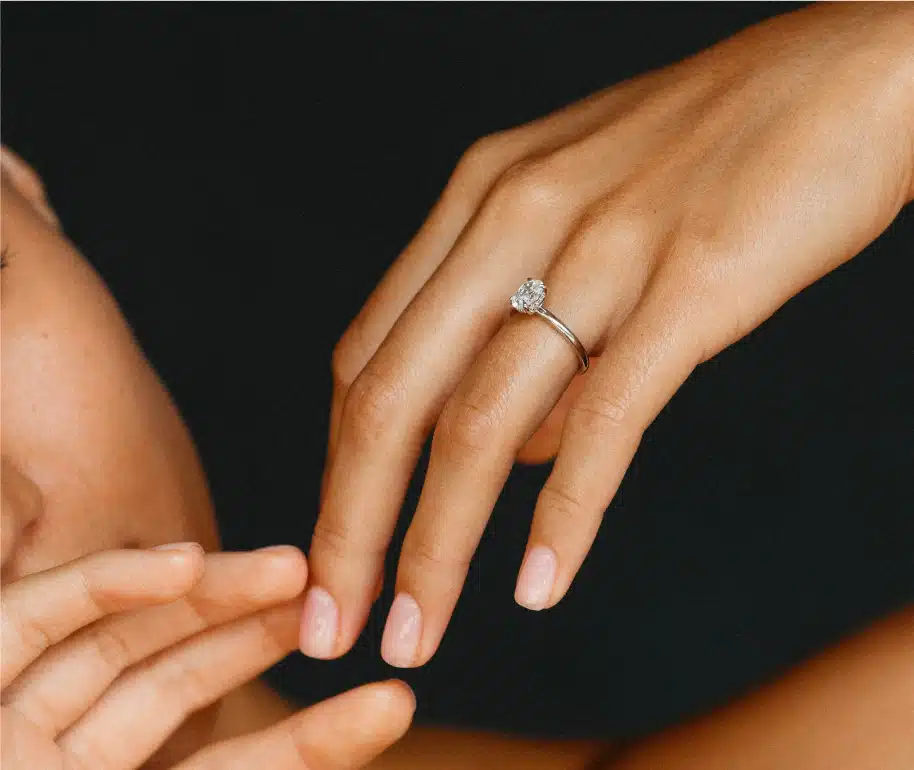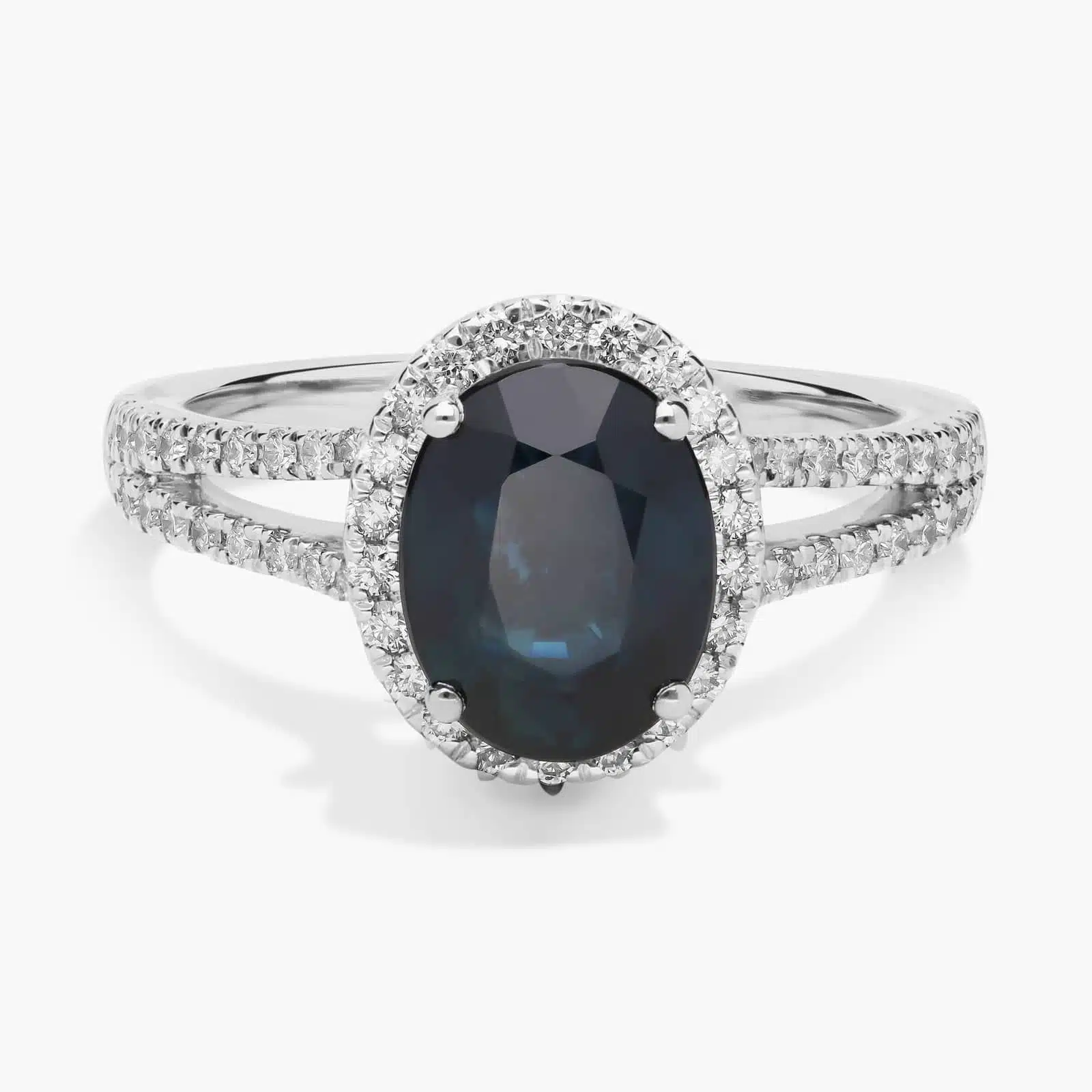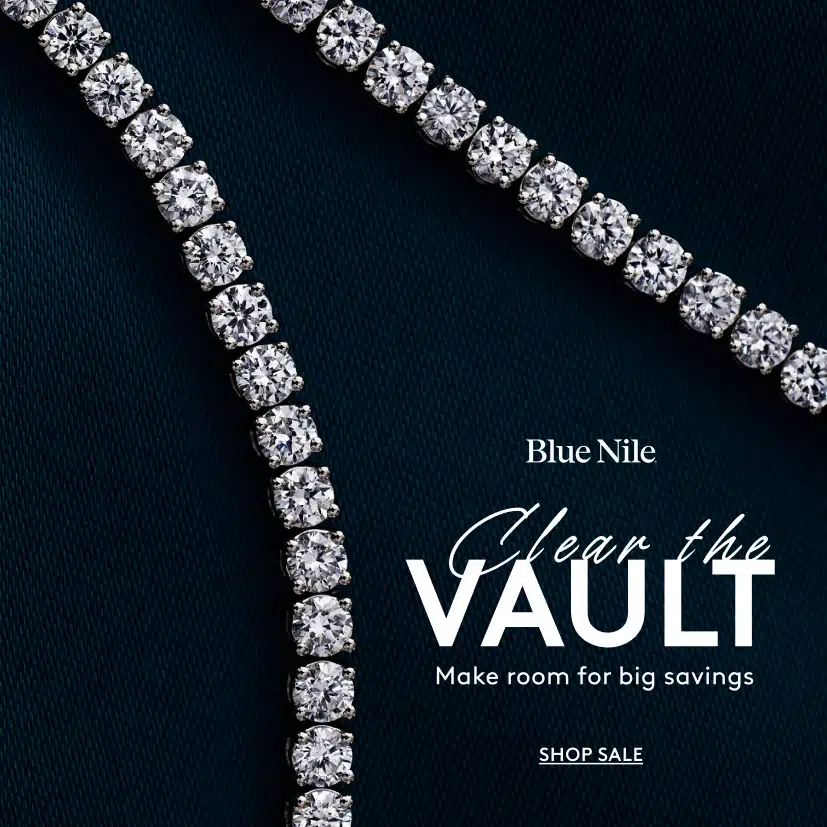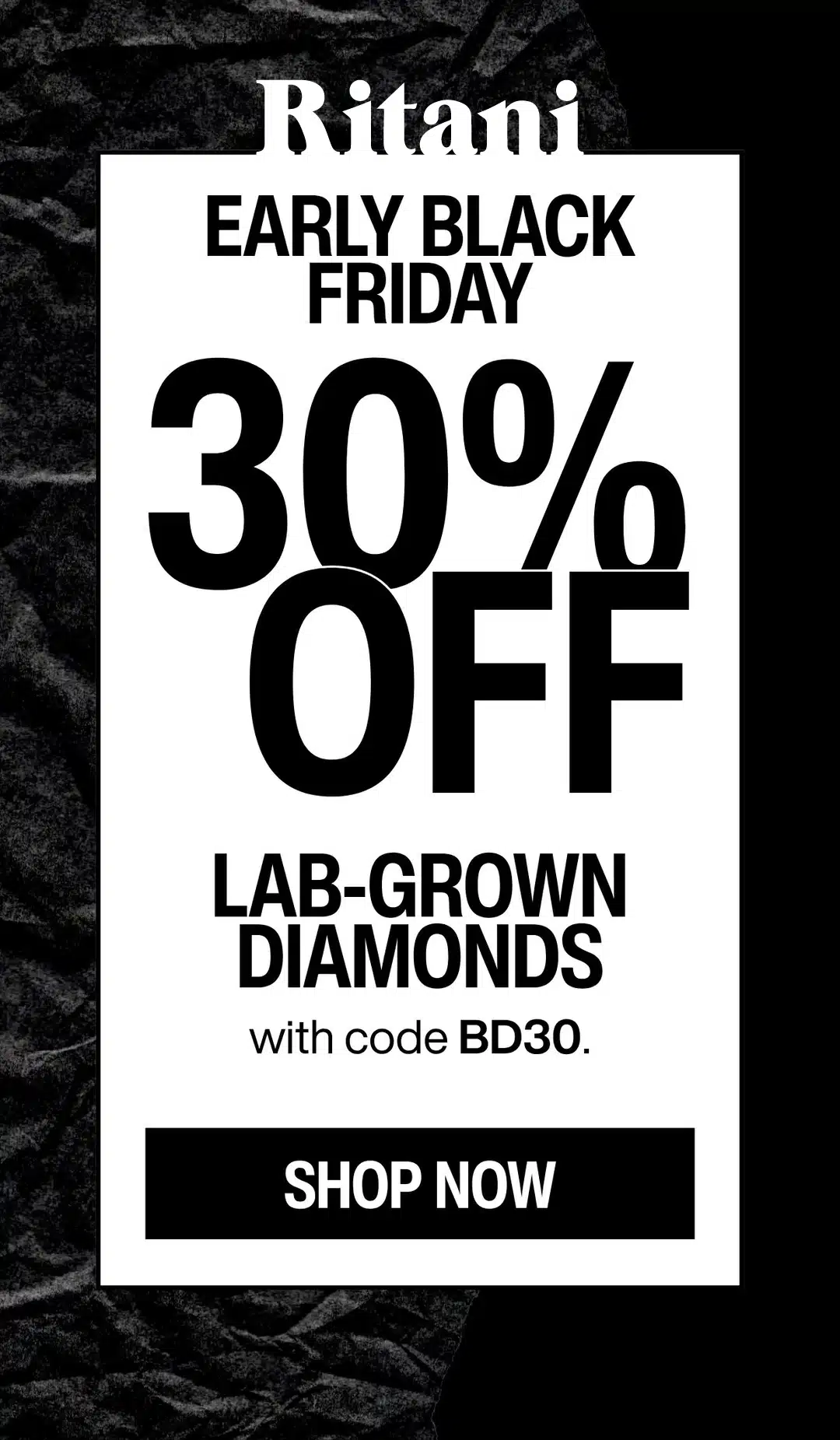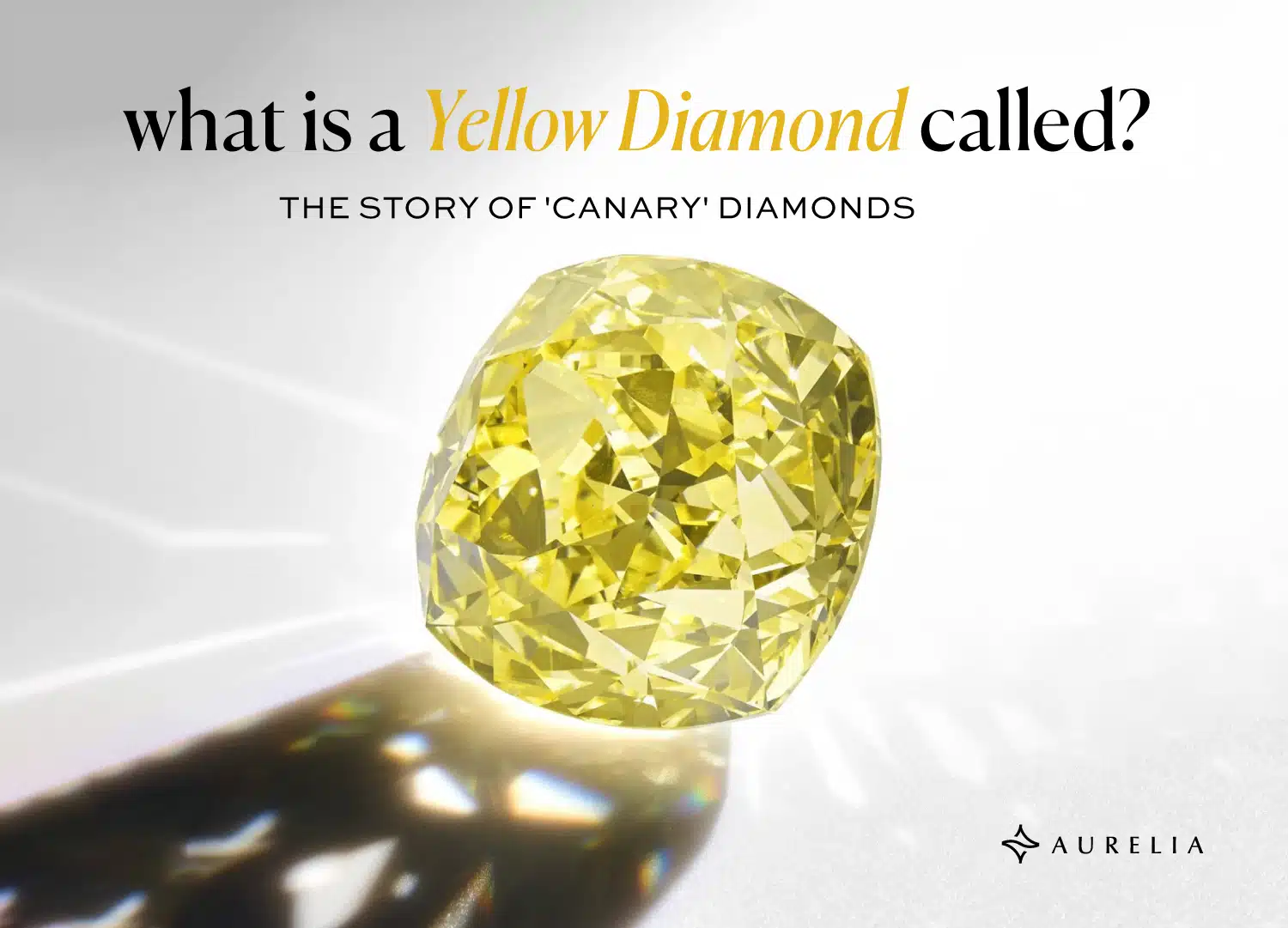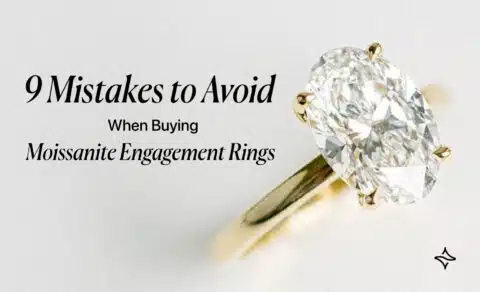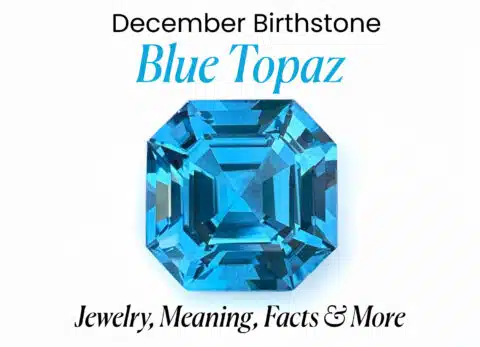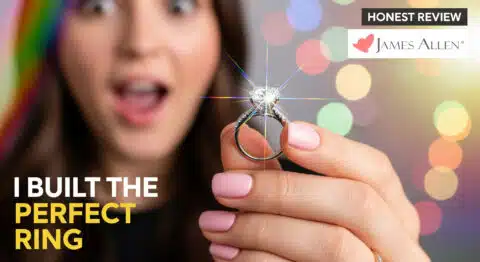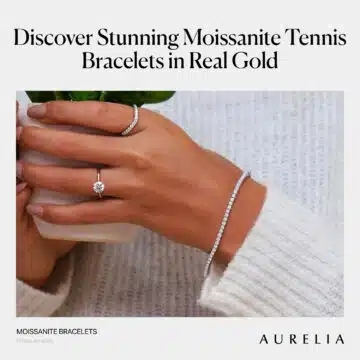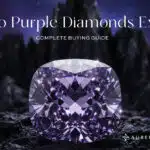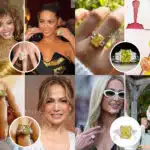When people ask what a yellow diamond is called, the most magical and famous name they’re given is “Canary”—a special title reserved for the most pure, intense, and sun-kissed yellow diamonds in the world, which owe their vibrant hue to nitrogen impurities in their crystal structure and are graded as Fancy Vivid Yellow by the Gemological Institute of America (GIA) for their exceptional saturation and rarity, making up less than 0.1% of all diamonds mined.
A Reader Asks: The Story Behind the Sunshine
Hi Mehedi,
I’m planning something incredibly special for an anniversary and I’ve fallen in love with yellow diamonds. They just feel so joyful. But I’m confused by the names. Some are just called ‘Fancy Yellow,’ but others are called ‘Canary.’ It feels like there’s a story there.
What’s the real difference between a canary diamond vs yellow diamond? Is ‘Canary’ just a marketing term, or does it actually mean something special? I want this gift to have a story as beautiful as the stone itself.
Thank you for sharing your passion,
— David, a hopeful romantic
David, thank you for a question that gets right to the heart of why we fall in love with these incredible gemstones. You are absolutely right—there is a story here, and your intuition that the name “Canary” means something truly special is spot on.
It is not just a marketing term. It’s a title of honor, a nickname whispered with a sense of reverence in the diamond trade for a century. It’s the name we reserve for a yellow diamond that is so pure, so vibrant, and so full of life that it stops you in your tracks. It’s the difference between a pretty yellow flower and a ray of pure, undiluted sunshine you can hold in your hand.
Deal Alert:
Elevate your design. Get up to 30% OFF engagement ring settings at
One In A Lifetime Sale:
“Clear The Vault” – Get up to 70% OFF on select jewelry at
| Pro Tip:
See every detail with 360° HD videos available at
Today, I’m not just going to give you a technical breakdown. I’m going to tell you the story you’re looking for. We’ll journey deep into the earth to discover how these gems get their joyful color, we’ll explore the official GIA yellow diamond color scale to see exactly where a “Canary” is born, and we’ll settle the great debate once and for all.
By the end, you’ll know precisely what a canary diamond is, and you’ll be able to choose a stone with a story as meaningful and special as your own. Let’s begin.
The Birth of Sunshine: What Makes a Yellow Diamond Yellow?
Every real yellow diamond begins its life as a secret, tucked deep within the earth’s mantle for billions of years. But unlike colorless diamonds, which are pure carbon, these sunny gems have a special ingredient in their recipe—one that turns a simple stone into a drop of captured light.
The Science of Sunlight: A Happy Accident
The creation of a diamond yellow color is a geological miracle. It isn’t a flaw; it’s an enhancement. As the diamond crystal was forming under immense pressure and heat, something wonderful happened: traces of nitrogen—the most common element in our atmosphere—were woven into the carbon structure.
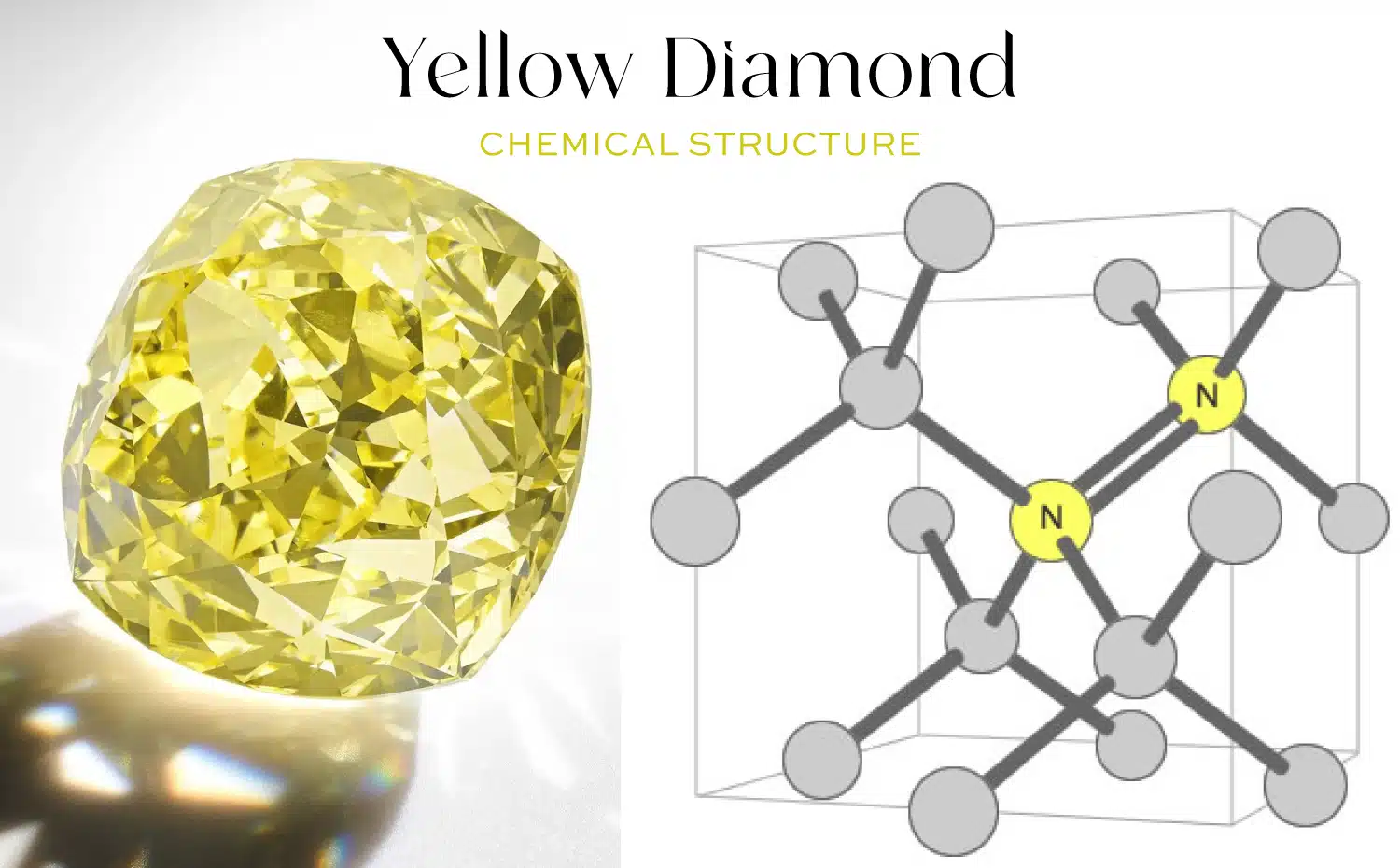
These nitrogen atoms are the artists. In the diamond’s chemical structure, a cubic lattice of carbon atoms arranged in a tetrahedral pattern, nitrogen atoms substitute for some carbon atoms at a rate of about 1 per million, creating isolated substitutional defects known as Type Ib diamonds or, in aggregated forms like N3 centers (three nitrogen atoms surrounding a vacancy), leading to Type Ia varieties; these impurities selectively absorb blue and violet light wavelengths, allowing the complementary yellow hues to shine through and give the gem its radiant color.
The more nitrogen atoms present, the more blue light is absorbed, and the more intense and saturated that stunning yellow color becomes. It’s the very reason we can have a yellow fancy diamond. It’s not just a stone; it’s a tiny, perfect prism tuned by nature to radiate sunshine. This incredible process, happening under unimaginable stress, is what truly defines at what depth a diamond is found.
How Rare Are They? A Lesson in Perspective
When we talk about a fancy color diamond, we are entering the realm of the truly extraordinary. For every 10,000 diamonds mined, only one will have enough color to be graded as a “fancy.” It’s an incredibly exclusive family of gems.
Within that rare family, natural yellow diamonds are the most common, but don’t let that word fool you. “Common” in this context is like saying a supercar is more common than a spaceship. They are still exceptionally rare when compared to the vast ocean of colorless diamonds.
Best Deal Of The Year – Final Days
Blue Nile’s “Clear The Vault” is ON.
Shop Fine Jewelry Upto 70% OFF.
*Exclusions may apply. See Blue Nile for complete details.
And this brings us to the first crucial distinction in our story, the one that answers David’s core question. While there are many yellow diamonds, only a tiny, elite fraction of them will ever be special enough to earn the prestigious “Canary” title. Think of “yellow diamond” as the category, and “Canary” as the crowning champion.
This entire spectrum of rarity, from the relatively accessible yellows to the impossibly scarce reds, is a fascinating topic we explore in depth in our Fancy Color Diamond Rarity Report. Understanding this helps you appreciate not just the beauty, but the true preciousness of what you’re looking at.
The Yellow Diamond Color Scale: A Journey from Dawn to Midday
To truly understand the story of a canary diamond, you need to learn to see color the way a specialist does. The GIA provides the official map for yellow diamond grading, but a visual guide—like the chart below—is what brings that map to life. It translates the technical grades into a tangible journey of color and, most importantly, value.
Reading the Chart: More Than Just a Grade
Think of this chart not just as a set of examples, but as a visual story of the sun’s journey across the sky. Each grade represents another hour of sunlight, growing in warmth, intensity, and price. Let’s walk through it together, one level at a time, to understand the story each of these diamonds is telling.
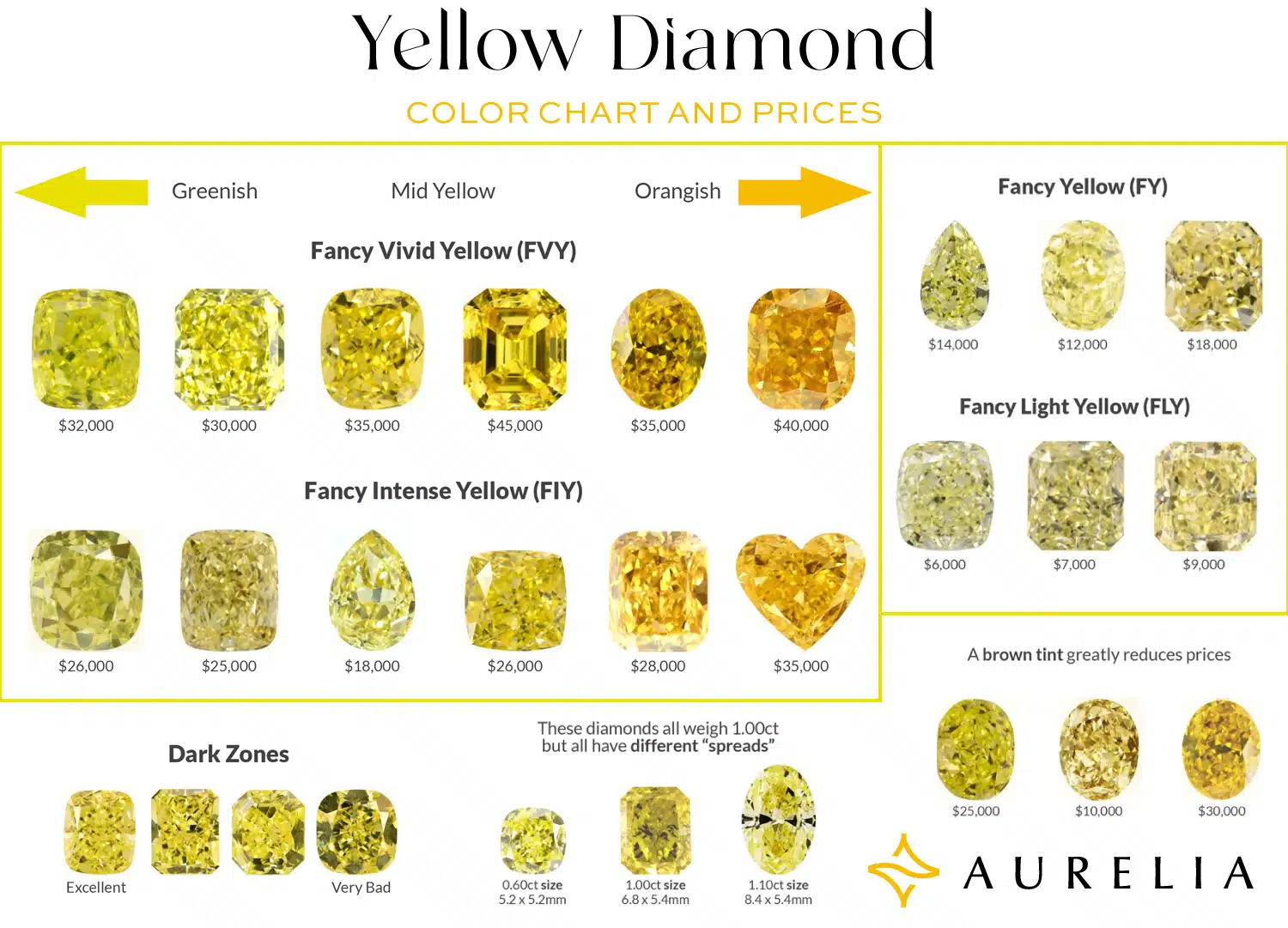
The Gentle Morning Light: Fancy Light (FLY) & Fancy Yellow (FY)
This is where our journey begins, with the soft, elegant hues of the morning.
The diamonds in the Fancy Light Yellow (FLY) category, as you can see in the chart with prices from $6,000 to $9,000 for a 1-carat stone, have a distinct but pastel sunshine. This is the “lemon yellow” a user on Reddit fell in love with, a unique color that isn’t overpowering.
It’s the perfect choice for a canary yellow engagement ring that whispers rather than shouts. You can often see this delicate charm in stones like the 1.2-carat Fancy Light Yellow Pear Shape available on Blue Nile.
Moving up to Fancy Yellow (FY), the sun has climbed higher. The chart shows prices for these stones ranging from $12,000 to $18,000. The color is now a confident, happy spring afternoon yellow. It’s balanced and joyful, the classic and most popular choice for a yellow diamond ring.
This is a great grade to search for when looking for value, but as a Reddit user wisely noted, “even within the same color grading the yellows can look so different,” so viewing high-quality images is key.
The Strong Afternoon Sun: Fancy Intense Yellow (FIY)
Now, the light becomes powerful and the color takes center stage.
In the Fancy Intense Yellow (FIY) range, the color is a deep, rich, saturated gold. Looking at the chart, you see the prices jump significantly, from $18,000 up to $35,000 for that stunning heart shape. The color is now the main event—bold, dramatic, and magnetic.
An Intense yellow diamond like the gorgeous 2-carat Fancy Intense Yellow Radiant Cut you might find at James Allen has a commanding presence and is a favorite of celebrities for a reason. This is where the value of yellow diamonds truly begins to accelerate.
The Peak of Brilliance: Fancy Vivid Yellow (FVY) – The Canary’s Realm
We have now reached midday. The sun is at its most powerful, and the color is at its peak.
This is the home of the canary yellow color. As the chart shows, Fancy Vivid Yellow (FVY) diamonds command the highest prices, ranging from $30,000 to over $45,000 for a 1-carat stone. This grade is reserved for a yellow so pure, electric, and undiluted that it seems to generate its own light.
The premium is enormous; the 1 carat fancy vivid yellow diamond price can be 30-40% higher than the finest D-colorless diamond. This is the “perfect pink diamond’s” sunny cousin, a collector’s dream.
My Expert Tip: Look Past the Grade to the Diamond’s True Personality
The GIA grade is the start of the story, not the end. The chart brilliantly illustrates three expert-level details you must consider:
Look at the arrows at the top of the chart. The color spectrum can lean slightly Greenish or more Orangish. A subtle orangey hint can be beautiful and warm, but a greenish hue is generally less desirable. The most valuable stones are a pure, “Mid Yellow” with no other distracting colors.
The chart makes this devastatingly clear: “A brown tint greatly reduces prices.” That example of a beautiful stone that would be worth $25,000 plummeting to $10,000 is one of the most important lessons in diamond buying. A fancy brownish yellow diamond is a major compromise and should be priced accordingly. Don’t let a seller gloss over this detail.
This is where true expertise comes in. The chart points out “Dark Zones,” which are areas of light leakage in a poorly cut diamond that look dark or dead. This is something we analyze in-depth when looking at the cut of stones like a Pear Shaped Diamond.
Furthermore, it shows three 1.00ct diamonds with different “spreads.” This means that even at the same carat weight, a well-cut diamond can have a much larger face-up appearance. Always compare millimeter measurements, not just carat weight, to get the best value.
Canary Diamond vs. Yellow Diamond
Now we arrive at the heart of the matter, the very question that prompted this journey. What is the real difference between a canary diamond and a yellow diamond? You’ve looked at the yellow diamond chart, you’ve seen the prices, and now it’s time to understand the name that elevates a diamond from beautiful to legendary.
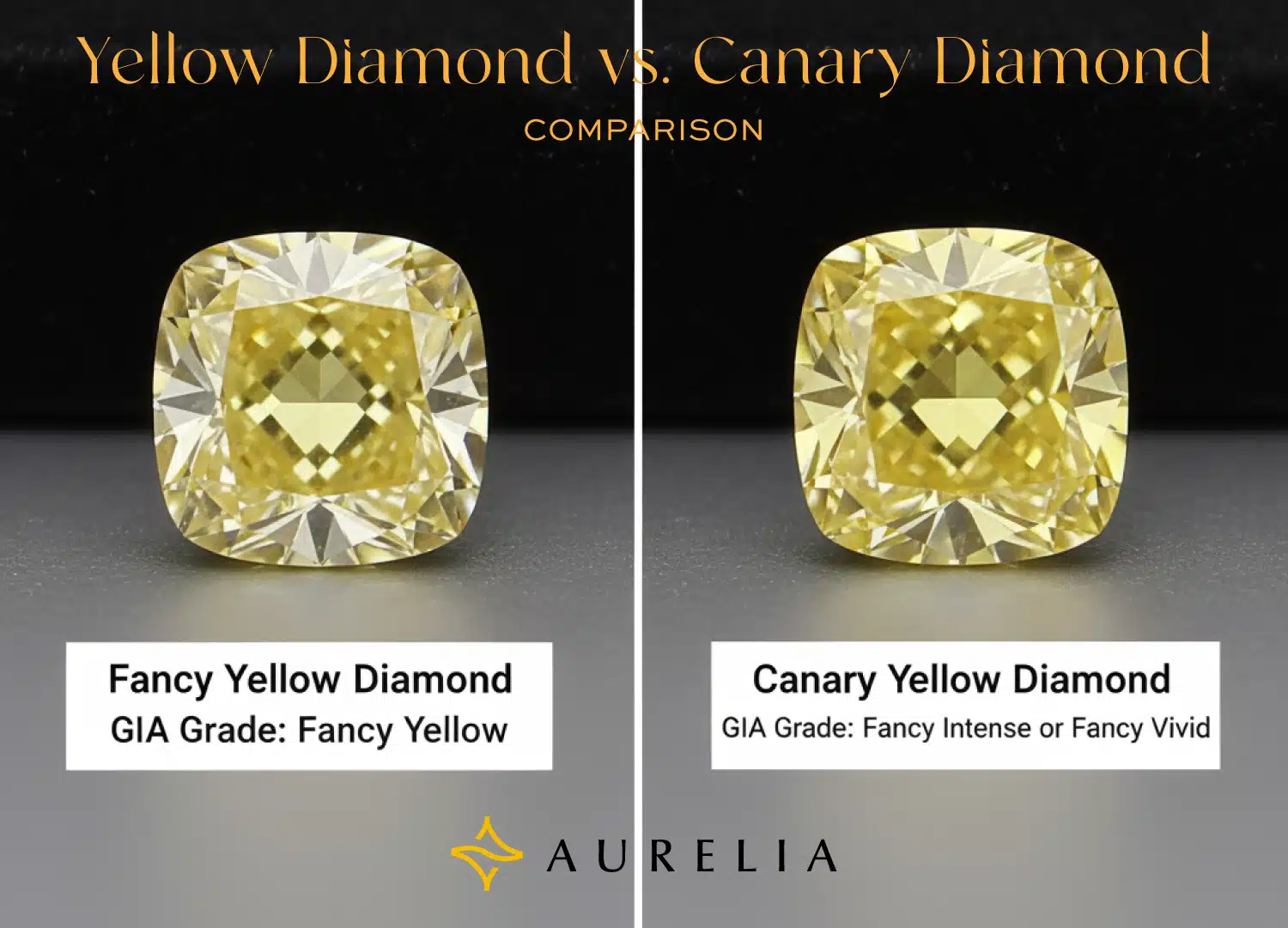
So, What IS a Canary Diamond?
Here is the most important piece of information I can give you: “Canary Diamond” is a prestigious trade nickname, not an official GIA grade.
You will never see the word “Canary” on a GIA certificate. As we discuss in my guide on What Does GIA Certified Mean?, the GIA uses precise, scientific language. But in the trade, amongst jewelers and gemologists who have handled thousands of stones, we needed a special name for the very best. “Canary” is that name.
It’s a title of honor given to Fancy Intense or (more commonly) Fancy Vivid yellow diamonds that possess a pure, strong yellow hue with no significant secondary colors. It’s named after the vibrant, singing canary bird because the color is just that—pure, joyful, and singing with life.
So, to answer David’s question directly: No, it is not just a marketing term. It IS special. It’s the insider’s nod to the best of the best. While all canary yellow diamonds are yellow diamonds, only the most elite are worthy of being called a Canary.
This simple table breaks down the crucial differences:
| Feature | Standard “Fancy Yellow” Diamond | “Canary” Yellow Diamond |
| GIA Grade | Can be any grade (Light to Vivid) | Exclusively Fancy Intense or Vivid |
| Color Purity | May have secondary hues (brown, green) | Must be pure, straight yellow |
| Rarity & Value | Common for fancy diamonds | The rarest and most valuable |
| The Vibe | A beautiful yellow stone | A legendary, collectible gem |
The Value of Sunshine: Yellow Diamond Prices in 2025
Understanding the value of yellow diamonds is to understand a unique and fascinating sub-market in the world of gemstones. While the broader diamond industry can see fluctuations, the demand for high-quality, authentic fancy colored diamonds tells a different story—one of passion, rarity, and enduring value.
How Much is a Yellow Diamond Worth?
As of 2025, the market for yellow diamonds is robust. While the overall fancy color market saw a tiny dip in Q1, yellow diamonds have been bucking that trend, with trading volume on some platforms surging an incredible 22% in the last year.
In fact, some analysts are projecting a 15% price rise in 2025 for high-quality gems, driven by new mining tech and incredible demand.
This is a completely different world from the one we discuss in my article, Are Diamond Prices Dropping?. The rarity of top-tier fancy colors insulates them from the market pressures that affect colorless stones. Their value is driven by a unique set of factors, and color is the undisputed king.
The entire price structure, from a modest fancy light yellow diamond to a world-class Canary, depends entirely on trustworthy grading. This value is only real if the grade is real, a concept I explain in-depth in my guide to What Are the Best Diamond Certifications?.
Here is a breakdown of what you can expect to pay for a high-quality, natural 1-carat yellow diamond today:
| Color Grade | 2025 Price Range (USD) | Mehedi’s Note |
| Fancy Light Yellow | $2,000 – $6,000 | A lovely, accessible entry for a touch of sun. |
| Fancy Yellow | $6,000 – $12,000 | The sweet spot for a beautiful canary engagement ring. |
| Fancy Intense Yellow | $10,000 – $15,000 | Serious color, serious value, a true statement piece. |
| Fancy Vivid (Canary) | $12,000 – $18,000+ | The pinnacle, where jewelry becomes a true asset. |
It’s fascinating to see how the market values different fancy colors. While a yellow is the most accessible, its price is still driven by extreme rarity, a concept we explore when comparing it to the market for the even rarer Pink Diamond.
The Icons: The Diamonds That Became Legends

To truly grasp the value and the story that David is searching for, you have to meet the icons. These are the yellow diamonds so extraordinary they have become legends, cementing the allure of the Canary in the public imagination.
- The Tiffany Yellow Diamond: Perhaps the most famous of all. A 128.54-carat cushion-cut masterpiece, it is considered priceless and has been worn by only a handful of icons, including Audrey Hepburn and Beyoncé. It is the very definition of a legendary stone.
- The Graff Vivid Yellow: A breathtaking 100.09-carat cushion cut that sold for an astounding $16.8 million. This is a perfect example of a true Canary diamond, with a pure and electric Fancy Vivid yellow color.
- The Sun Drop: At 110.03 carats, this pear-shaped wonder was the largest known Vivid yellow diamond when it sold for $13 million. Its name perfectly captures the magical, sun-drenched quality that makes these diamonds so special.
Fresh From the Earth: The Latest Discoveries of 2025
While the stories of legendary diamonds of the past are captivating, the story of the yellow diamond is still being written right now. With collectors and buyers more eager than ever for these rare gems, the hunt for new sources is a global, high-stakes treasure hunt. And right now, all eyes are turning north.
Where Are New Yellow Diamonds Coming From? The Canadian Juggernaut
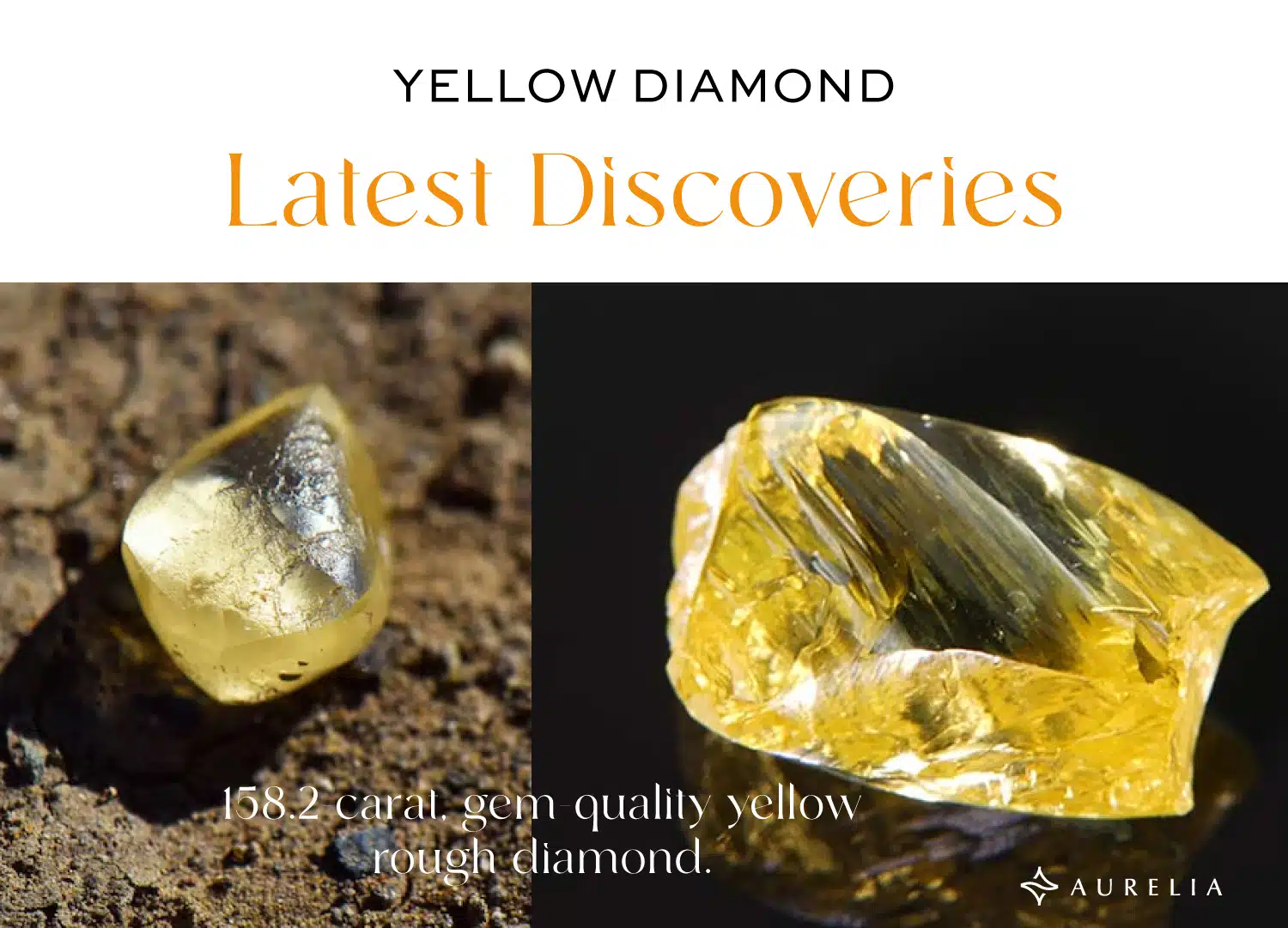
For years, the story of fancy colored diamonds was dominated by mines in Africa and Australia. But we are seeing a seismic shift. In 2025, Canada is solidifying its reputation as a yellow diamond hotspot, yielding some of the most important discoveries of the modern era.
In April 2025, the industry was electrified by news from Rio Tinto’s Diavik Mine in the Northwest Territories. They unearthed a colossal 158.2-carat, gem-quality yellow rough diamond.
To understand the scale of this, consider:
- This is one of the largest rough yellow diamonds ever discovered in Canada.
- Diavik is famous for its high-quality white diamonds; less than 1% of its output has a yellow color, making this find a true statistical marvel.
- A stone this size could yield an incredible polished centerpiece worth well over $1 million, a testament to the astronomical yellow diamond value per carat.
This discovery doesn’t just add another amazing chapter to the story; it shows that the earth is still capable of revealing incredible, sun-drenched treasures. It’s a reminder of the raw power and beauty we discuss in our guide, What Things Are Strong Enough to Break Diamonds.
What makes the 2025 Diavik discovery even more special for today’s buyer is the story behind it. Diavik is a leader in sustainable mining. In 2024, they completed Canada’s largest off-grid solar power plant in the far north to power their operations.
This means these incredible yellow diamonds are being brought to the surface with a focus on environmental responsibility, directly addressing modern concerns about why we refer to some diamonds as conflict materials. You aren’t just buying a stone; you’re buying a piece of a sustainable legacy.
This incredible find builds on the legacy established by other Canadian mines, including the 2023 discovery of what may be Canada’s largest fancy vivid yellow from the Ekati Mine. A clear pattern has emerged: Canada is a vital and ethical new frontier in the story of the Canary Diamond.
Diamond IQ Test: Natural or Lab-Grown?
Two identical diamonds: GIA Certified, 1.51ct, D Color, VVS1, Ideal Cut. One is natural ($16,530), the other is lab-grown ($2,390). Choose the diamond you like better and see if you can match it to its origin.
How to Choose Your Perfect Canary Yellow Diamond Engagement Ring
Bringing one of these sun-drenched gems home and making it yours is the most exciting step. This is where your knowledge transforms into a real, tangible piece of art. The choices you make from here on out will shape its final personality.
The Setting: Your Secret Weapon for Enhancing Color
The right setting is more than just a home for your diamond; it’s a strategic tool for maximizing its beauty. This is a topic I see discussed endlessly, and for good reason. Your metal choice will fundamentally change how the yellow color is perceived.
As one incredibly savvy user on a Reddit forum sagely advised from her own experience,
“I’ve got a yellow gold basket underneath to enhance the color of the diamond.”
This is a professional-level trick and highlights the two main strategies you can employ:
This is my top recommendation for maximizing color.
- How it Works: The rich, warm hue of an 18k yellow gold setting complements the diamond, and its color reflects up into the stone.
- The Result: It makes the yellow of the diamond appear deeper, richer, and more saturated.
- Expert Tip: This strategy is particularly effective for making a fancy light yellow diamond look more like a Fancy Yellow, giving you more color impact for your budget. It’s one of the key tricks you learn when discovering how to build your own engagement ring on James Allen.
For those who want a bold, crisp statement, this is the way to go.
- How it Works: The cool, bright white of platinum or white gold creates a stark visual contrast against the warm yellow of the diamond.
- The Result: It makes the yellow canary diamond “pop” in an electric and eye-catching way.
- Expert Tip: This works best with diamonds that already have a strong, saturated color (Fancy Intense or Vivid) where you don’t need the setting to do any heavy lifting. You can explore a variety of these styles in our guide to the best places to buy engagement rings online.
Where to Find Your Dream Yellow Diamond
Now for the final step: finding your stone. The market for yellow diamond for sale is more accessible than ever before, especially with the rise of high-quality lab-grown options.
My trusted recommendations for the best selection, imaging, and value are the world’s top online retailers:
James Allen
They are the kings of high-resolution, 360-degree video, which is absolutely critical for judging the true color and undertones of a fancy color diamond. They offer a fantastic inventory of both natural yellow diamonds and breathtaking canary lab diamond options.
You could find a stunning almost 10-carat Fancy Intense Yellow Cushion Cut Lab Diamond for $16,500 here and inspect every single facet from your own home.
Blue Nile
As the original online pioneer, Blue Nile has a massive and beautifully curated selection of natural yellow diamonds. Their tool allows you to filter by intensity and shape, making it easy to compare options. They are a go-to for finding a certified, high-quality stone like a 1.51-carat Fancy Vivid Yellow Emerald Cut Natural Diamond for almost $36,000.
These retailers have put the power in your hands, allowing you to find the perfect ray of sunshine that fits your story and your budget.
The Questions About Yellow Diamond You’re Probably Asking Right Now
When you’re exploring a world as fascinating as yellow diamonds, a lot of specific questions come up. Here are my direct, comprehensive answers to the most common queries I see from curious buyers just like you.
My Final Verdict: Which Yellow Diamond Is Right for You?
David, we started this journey with your search for a story, for a gem whose meaning was as beautiful as its color. And now you have the answer. You know that the name “Canary” isn’t just a label; it’s a title of honor, reserved for a diamond that captured the purest essence of sunshine.
The answer to the question “what are yellow diamonds called?” is that they are called beautiful, joyful, and rare. But the very best among them, the ones with a story to tell, are called Canary.
- For the Romantic & The Connoisseur:
If you, like David, are seeking a stone with a story, an heirloom with proven rarity, and a name that carries a century of prestige, then a natural Canary Yellow Diamond—a Fancy Intense or Fancy Vivid—is an incredible choice. It is a tangible piece of the sun. - For the Lover of Sunshine & Smart Value:
If you desire that same vibrant, joyful color and the unique personality of a yellow diamond engagement ring without the investment-level price tag, then the canary lab diamond is the perfect, most brilliant choice. You receive a scientifically and visually identical stone, allowing you to choose a magnificent size and color that would be otherwise unattainable.
You now hold the story and the knowledge. No matter which you choose, you’re getting a real, beautiful diamond. You can now make a choice that satisfies both your heart and your head.
Continue Your Research Journey
You’ve now mastered the story behind one of the world’s most captivating gemstones. You understand the nuances of the yellow diamond scale and the true meaning of a Canary. The next step is to take this expert-level knowledge and apply it to the final, practical steps of your purchase. These hand-picked guides will turn you from an informed reader into a confident buyer.
The In-Depth Retailer Reviews
You know where to find these diamonds. Now, let’s put the world’s biggest online retailers under the microscope.
- See How the Main Competitor Stacks Up: The Ultimate James Allen Review.
- The Original Online Giant, Examined: Our In-Depth Blue Nile Reviews.
- A Look at a Top Contender: The Full Story in Our Taylor & Hart Review.
Advanced Diamond Knowledge
You’ve mastered color. Now, become an expert in the other critical factors that determine a diamond’s beauty and value.
- The Next Step in the 4Cs: A Deep-Dive on Clarity in our SI1 Clarity Diamond Guide.
- Learn How Lab Diamonds Are Graded: An Expert Guide to IGI Diamond Certification.
- Explore an Iconic Shape: Our complete guide to the Princess Cut Diamond Ring.
Practical Guides & Strategies
Let’s get down to the final, practical questions you’ll face before making this special purchase.
- The Ultimate Mystery Solved: A must-read guide on How to Find Out What Ring a Girl Really Wants.
- Timing is Everything: A savvy shopper’s guide to When Do You Buy Wedding Rings?.
- Let’s Talk Numbers: A realistic look at budgeting with our guide, Is $1000 a Lot for a Wedding Ring?.

